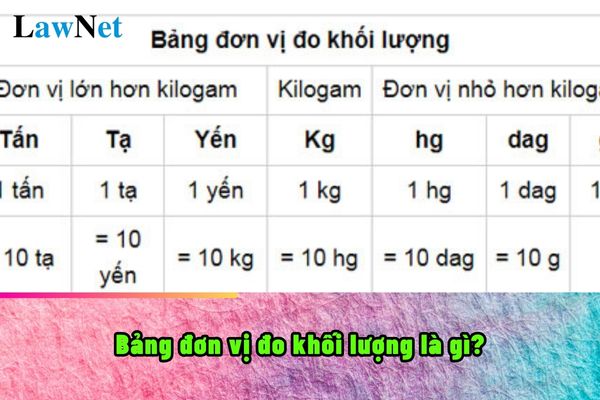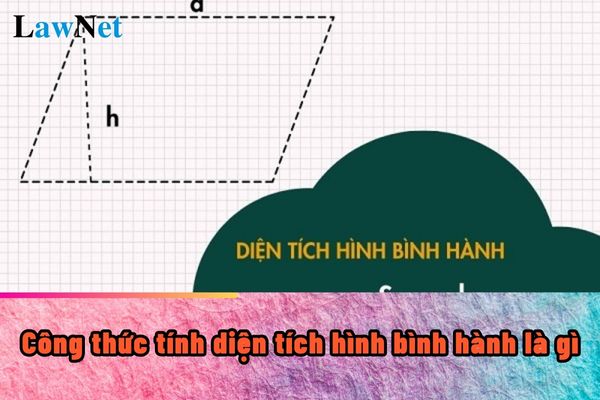What is the table of mass measurement units? From which grade will the table of mass measurement units be taught in Vietnam?
What is the table of mass measurement units?
A mass measurement unit table is a system of units used to quantify the mass of a substance. Mass is a physical quantity that represents the amount of matter contained within an object.
*The mass measurement unit table helps with:
Comparison: It helps us compare the masses of different objects accurately. For example: How much does an apple weigh compared to a grapefruit?
Transactions: In buying, selling, and production, we need to know the exact mass of goods to ensure fairness.
Research: In science, researchers use the mass measurement unit table to measure the quality and quantity of substances in experiments.
*Common mass measurement units
Metric system:
Ton (t): The largest unit, typically used to measure the mass of heavy objects such as trucks and ships.
Quintal: Equals 100 kg.
Deciton: Equals 10 kg.
Kilogram (kg): The basic unit, typically used to measure the mass of people and household items.
Hectogram (hg): Equals 100 grams.
Decagram (dag): Equals 10 grams.
Gram (g): The smallest unit, typically used to measure the mass of small objects like rice grains and pills.
Imperial system:
Pound (lb): A commonly used unit in English-speaking countries.
Ounce (oz): Smaller than a pound.
| Unit | Symbol | Conversion |
| Ton | t | 1 ton = 10 quintals = 100 decitons = 1000 kg |
| Quintal | quintal | 1 quintal = 10 decitons = 100 kg |
| Deciton | deciton | 1 deciton = 10 kg |
| Kilogram | kg | 1 kg = 1000 g |
| Hectogram | hg | 1 hg = 100 g |
| Decagram | dag | 1 dag = 10 g |
Examples of using the mass measurement unit table
Example 1: A sack of rice weighs 50 kg. How much does the sack of rice weigh in decitons?
Answer: 50 kg = 5 decitons (since 1 deciton = 10 kg)
Example 2: An apple weighs 150 grams. How much does the apple weigh in kilograms?
Answer: 150 grams = 0.15 kg (since 1 kg = 1000 grams)
*Note: When solving problems related to mass measurement units, you need to pay attention to converting units to the same type for calculation.

What is the table of mass measurement units? From which grade will the table of mass measurement units be taught in Vietnam? (Image from the Internet)
From which grade will the table of mass measurement units be taught in Vietnam?
According to the latest general education curriculum, as specified in Section V of the Appendix to the Mathematics Education Curriculum issued with Circular No. 32/2018/TT-BGDDT, the mass measurement unit table will be taught as follows:
In line with the curriculum requirements of Grade 2 Mathematics, in the section on Measurement under the topic of Quantity and Quantity Units, students will be introduced to:
- Recognizing the mass measurement unit: kg (kilogram); reading and writing mass measurements within the range of 1000 kg.
In Grade 3 Mathematics, also in the section on Measurement under the topic of Quantity and Quantity Units, students will be introduced to:
- Recognizing the mass measurement unit: g (gram); and the relationship between grams and kilograms.
In Grade 4 Mathematics, in the section on Measurement under the topic of Quantity and Quantity Units, students will be introduced to:
- Recognizing the mass measurement units: deciton, quintal, and ton, and their relationship with kilograms.
Thus, according to the regulations, the mass measurement unit table will be taught continuously from Grade 2 to Grade 4 and subsequently summarized into a complete mass measurement unit table.
What are requirements for evaluating primary school students in Vietnam?
According to Article 4 of the Regulations on Evaluation of Primary School Students issued with Circular No. 27/2020/TT-BGDDT, the following requirements must be met when evaluating primary school students:
- Evaluate students based on the degree to which they meet the learning objectives and specific manifestations of the components of each subject, educational activity, and the students' characteristics and abilities as required by the primary school education program.
- Regular assessment through comments, periodic assessment through scores combined with comments; combining evaluations from teachers, students, and parents, with the teacher's evaluation being the most important.
- Assess students' progress and aim to foster their progress; emphasize motivation and encouragement for students' efforts in learning and training; help students maximize their abilities and competencies; ensure promptness, fairness, and objectivity; do not compare students with each other, and do not create pressure on students, teachers, and parents.
What fundamental methods for teaching Mathematics in the curriculum in Vietnam?
In Section VI of the Appendix to the Mathematics Education Curriculum issued with Circular No. 32/2018/TT-BGDDT, the teaching methods in the Mathematics Curriculum must meet the following basic requirements:
- Suitable for students' cognitive processes (moving from concrete to abstract, from easy to difficult); not only emphasizing the logicality of mathematical science but also paying attention to approaches based on students' experiences and experiential learning;
- Adhering to the principle of "learner-centered," promoting active and self-disciplined learning, considering the needs and cognitive abilities of each individual student; organizing the teaching process in a constructive direction, where students participate in exploration, discovery, reasoning, and problem-solving;
- Flexibly applying active teaching methods and techniques; creatively integrating traditional teaching methods and techniques; combining classroom teaching activities with practical experiences, applying mathematical knowledge in practical situations. The lesson structure ensures a balance and harmony between core knowledge, applied knowledge, and other components.
- Efficiently and adequately using the minimum required teaching facilities and equipment for Mathematics; allowing the use of self-made teaching aids suitable for the lesson content and student needs; enhancing the use of information technology and modern teaching means and equipment in a suitable and effective manner.



- What are the sample essays on sharing an experience with a family member for 6th-grade students in Vietnam? What elective subjects do 6th-grade students learn?
- Vietnam: What is Polymer? What is the grade at which the Chemistry curriculum covers Polymer?
- Vietnam: What are the sample social argumentative essays on artificial intelligence? What is the grade at which students initially write social argumentative essays?
- Vietnam: What are the sample discussions on students being late for school? What are the criteria for text corpus used in the 9th-grade Literature curriculum?
- Vietnam: When was the directive on national resistance given? What education level does 9th Grade fall under?
- Vietnam: What is the overview of industrial revolutions over periods in the 10th-grade History curriculum? What knowledge about industrial revolutions do 10th-grade students learn?
- What is the Plan for organizing professional training for English teachers in Ho Chi Minh City about?
- Vietnam: What are the sample outlines of a social argumentative essay on kindness for 9th-grade students? What are the kindness qualities required for 9th-grade students?
- Vietnam: What are the sample argumentative essays on respecting people's differences for 11th-grade students? What are the conditions for 11th-grade students to be eligible for grade advancement?
- Are students pursuing dance in Vietnam eligible for tuition reduction?

